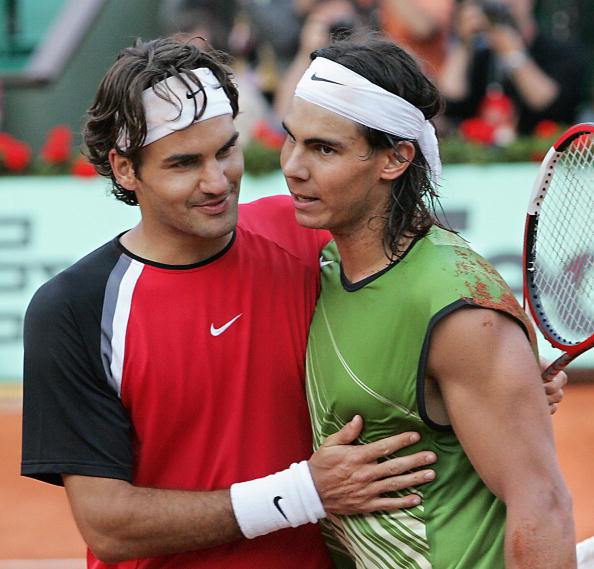For a while now, make that years’ worth, we have been waiting for a Roger Federer-Rafael Nadal clash at the US Open. The draws have been made, either they have been grouped in the same half – and one has fallen short – or they have happened to be in different halves entirely, and have never met.
One reason for the higher-than-usual (in the last couple of years) pangs to see Fedal square-off in New York is because of how each of their meetings in the three other Majors has been. We have seen Nadal end Federer’s reign as the favourite at Wimbledon, and the Australian Open. The first result coming about after multiple attempts while achieving the second, in a far easier manner.
But it is what we have had the opportunity to see in Roland Garros that has kept this rivalry distinct and blazing, impervious to time passing by. Twelve of their previous 38 matches have come at the three Majors. Five of these 12 meetings have come by in Paris, four in finals and once in that fated semi-final in 2005, which in the truest of terms was the origin of this rivalrous duopoly. And, it had to happen the way it did for audiences to understand the significance of what this rivalry was and would continue to be.
Though, for a moment, let us imagine an alternate reality. A reality in which the Swiss, instead of the Spaniard, won their first meeting and the ones to follow thereafter. Let us think of an alt-verse where results at the 2008 French Open and Wimbledon did not turn out the way they did. And it was the Mallorcan in place of the Basel-born who needed a coincidental intervention to halt the latter in his tracks in Paris, the following year.
If all of these had transpired, would we have felt the same way about the two being the nemesis of each other? What hold would each player have had in our lives? Would we be thinking of them as a duology, where each player is one half of a pair that has added to men’s tennis’ qualitative appeal?
Indeed, they would have been rivals still but we would not have seen them as equals – as the greatest of the game – despite the clear unevenness in their head-to-head, albeit in Federer’s favour. Most of all, if they had been slated to play in the semi-final of the French Open nearly a decade-and-a-half removed since their first meeting there under such envisioned reality, perhaps, we would not have been this excited about the prospective match-up.
Roger Federer vs. Rafael Nadal at #RolandGarros.
In 2019
14 years after that crazy semifinal.
What a time to be alive.
— José Morgado (@josemorgado) June 4, 2019
The reality as we know it is so much better. In its moments of exultation and in times of despair – for the players, their fans and even for the supposedly unbiased viewers – reality has presented the players as humans. Each match between Federer and Nadal has seen both players put forth this quality – humanness – at the forefront while vying for wins. Regardless of how easy or hard the results have come by for either player.
When Federer and Nadal step onto the court for their 39th meeting, they will try to do the same all over again, impassive to time’s turning. As Federer said, “Like against any player, there is always a chance. Otherwise, nobody will be in the stadium to watch because everybody already knows the result in advance…For me to get to Rafa is not simple. It took five matches here for me to win to get there. That’s why I’m very happy to play Rafa, because if you want to do or achieve something on the clay, inevitably, at some stage, you will go through Rafa, because he’s that strong and he will be there.”
In a way, this match is also about getting closure, specifically in the French capital.
Federer. Nadal. Roland Garros semifinal. It's happening.
The two legends will face off for the first time in Paris since 2011 after Federer defeats Stan Wawrinka 7-6, 4-6, 7-6, 6-4.
Get your popcorn ready. pic.twitter.com/sonstOc71W
— SI Tennis (@SI_Tennis) June 4, 2019
Where Wimbledon and the Australian Open have given us relative cessation, the French Open has remained in limbo in its one-sidedness. This contest, coming at a time when both have different highs at their backs, promises to be an interesting pivot for them to revisit their rivalry and their legacy at the Majors.
Even as it rekindles exigency for more of their matches at the Majors. Not only in Flushing Meadows later in the year, but perhaps in the soon-to-follow Wimbledon championships, too, in a unique kind of second wind.






